Kingfishers
The Kingfisher is a pigeon-sized bird, dark blue above and white below. It has a dagger–like beak and a bushy crest. Both the male and the female have a dark blue band across the breast, but the female also has a rufous band across the belly.
The Kingfisher perches on tree limb or piling and scours the Lake below. Upon spotting a minnow or small fish, it dives, grabs it, flies back to its perch, eats it, and then watches for the next opportunity.
While there are many species of kingfishers in the world, only one is found in this area (and, indeed, throughout Canada): the Belted Kingfisher, a name which refers to the prominent dark blue band across its breast.
 The Belted Kingfisher is usually seen perched upon a rock, piling, or tree as it intently scans for fish in the lakeside shallows. A good time for doing this is early in the day as the lake is usually calm. This one watches the water from a piling in the the first rays of the rising sun.
The Belted Kingfisher is usually seen perched upon a rock, piling, or tree as it intently scans for fish in the lakeside shallows. A good time for doing this is early in the day as the lake is usually calm. This one watches the water from a piling in the the first rays of the rising sun.
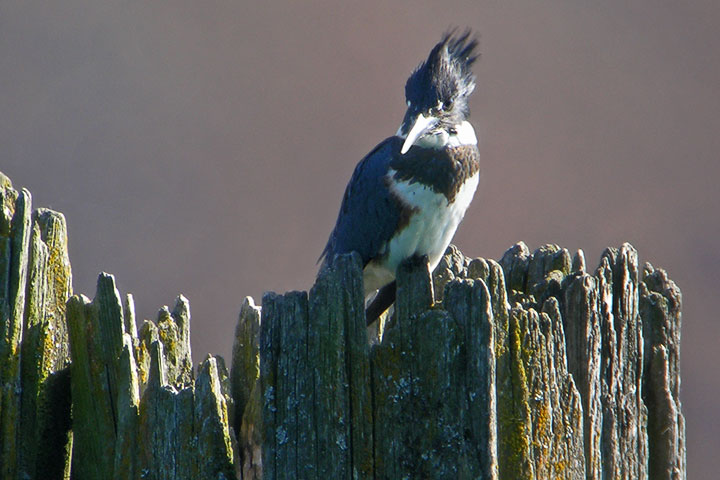 Both sexes have a dark blue band (the belt of belted) across the breast. To this, the female adds a rufous band across the chest.
Both sexes have a dark blue band (the belt of belted) across the breast. To this, the female adds a rufous band across the chest.
This is the male.
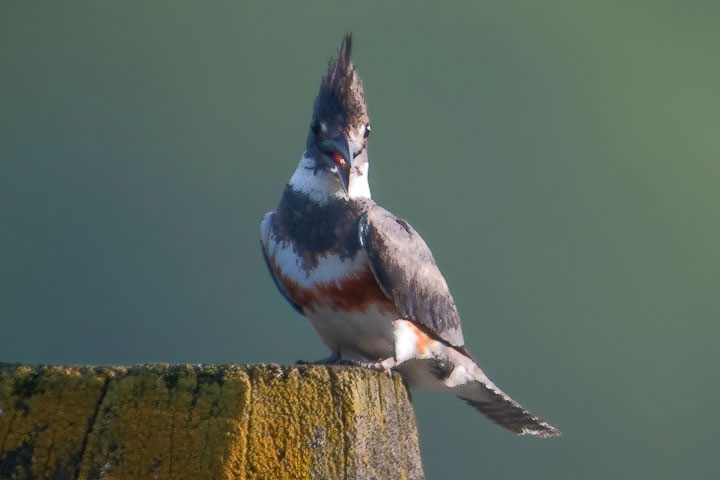 Both sexes have a dark blue band (the belt of belted) across the breast. To this, the female adds a rufous band across the chest.
Both sexes have a dark blue band (the belt of belted) across the breast. To this, the female adds a rufous band across the chest.
This is the female.
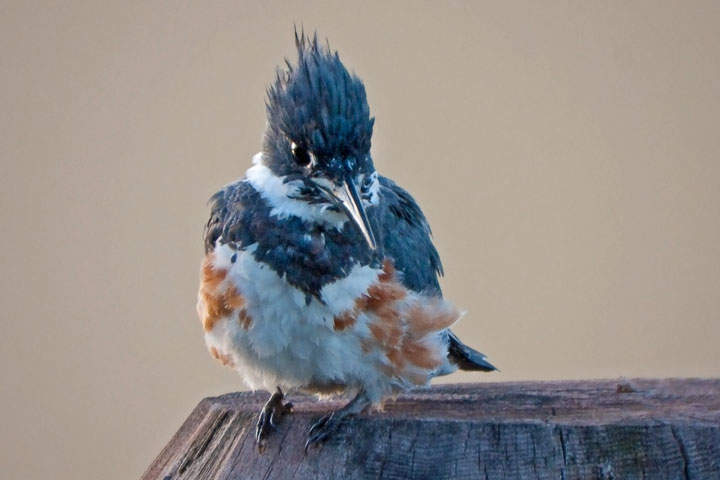 Juvenile kingfishers look like adults except the juvenile male shows an incomplete rufous chest band.
Juvenile kingfishers look like adults except the juvenile male shows an incomplete rufous chest band.
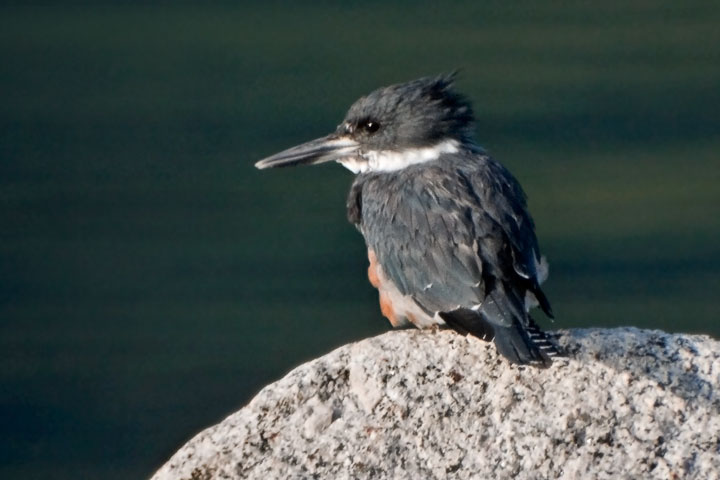 Any perch with a good view of the waters below will do.
Any perch with a good view of the waters below will do.
 A kingfisher lands on a piling in this composite of four images
A kingfisher lands on a piling in this composite of four images
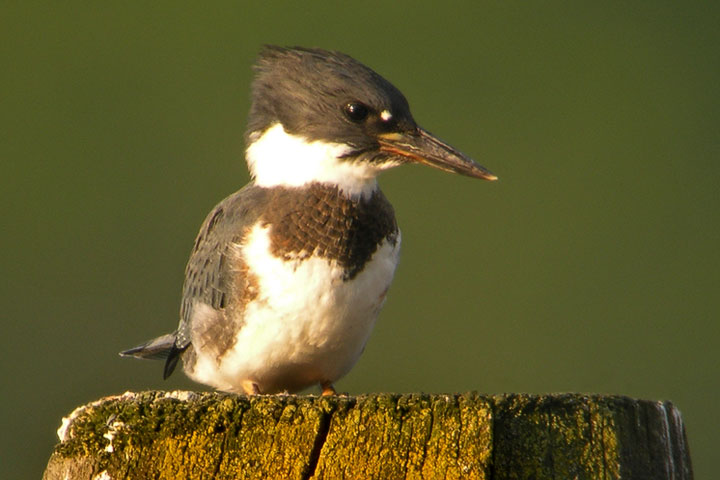 The Belted Kingfisher has a white spot in front of each eye.
The Belted Kingfisher has a white spot in front of each eye.
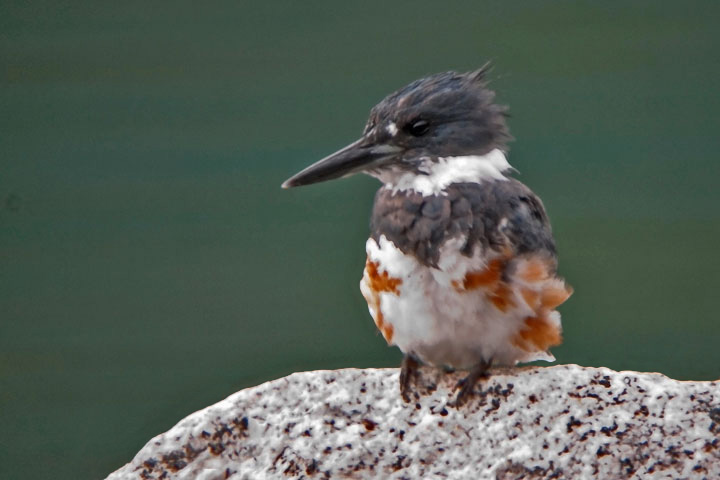 Photographing kingfishers is not easy; even when alone they rarely stay put for long, and if approached, they leave.
Photographing kingfishers is not easy; even when alone they rarely stay put for long, and if approached, they leave.
Information from Wikipedia: Belted Kingfisher.
![]()